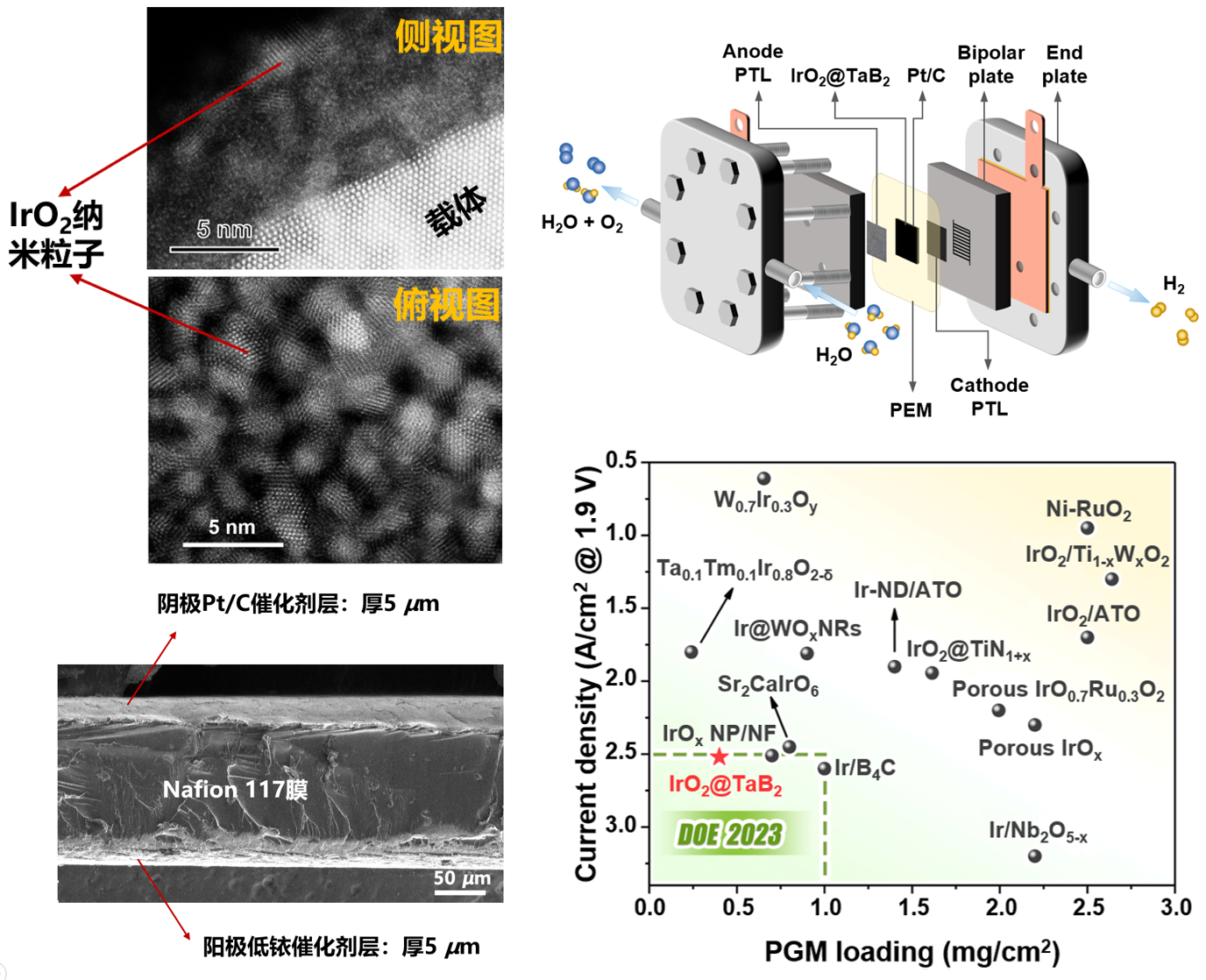Yuannan Wang1, Mingcheng Zhang1, Zhenye Kang 2, Lei Shi1, Yucheng Shen1, Boyuan Tian3, Yongcun Zou1, Hui Chen1* & Xiaoxin Zou 1*
Nat. Commun.2023, 14, 5119
The sluggish kinetics of oxygen evolution reaction (OER) and high iridium loading in catalyst coated membrane (CCM) are the key challenges for practical proton exchange membrane water electrolyzer (PEMWE). Herein, we demonstrate high-surface-area nano-metal diborides as promising supports of iridium-based OER nanocatalysts for realizing efficient, low-iridium-loading PEMWE. Nano-metal diborides are prepared by a novel disulphide-to-diboride transition route, in which the entropy contribution to the Gibbs free energy by generation of gaseous sulfur-containing products plays a crucial role. The nano-metal diborides, TaB2 in particular, are investigated as the support of IrO2 nanocatalysts, which finally forms a TaOx/IrO2 heterojunction catalytic layer on TaB2 surface. Multiple advantageous properties are achieved simultaneously by the resulting composite material (denoted as IrO2@TaB2), including high electrical conductivity, improved iridium mass activity and enhanced corrosion resistance. As a consequence, the IrO2@TaB2 can be used to fabricate the membrane electrode with a low iridium loading of 0.15 mg cm−2, and to give an excellent catalytic performance (3.06 A cm−2@2.0 V@80 oC) in PEMWE―the one that is usually inaccessible by unsupported Ir-based nanocatalysts and the vast majority of existing supported Ir-based catalysts at such a low iridium loading.

Read more at https://www.nature.com/articles/s41467-023-40912-8


